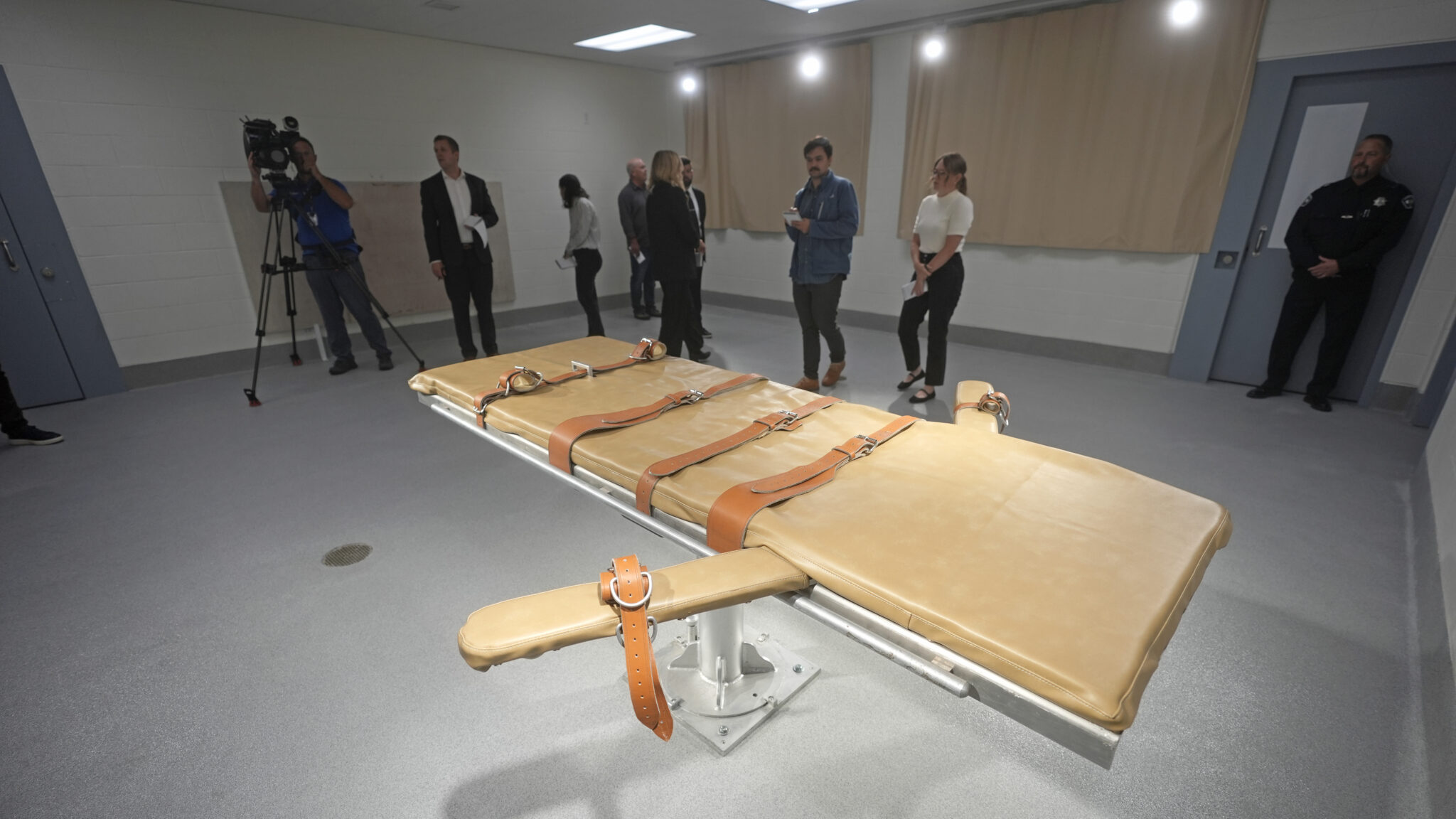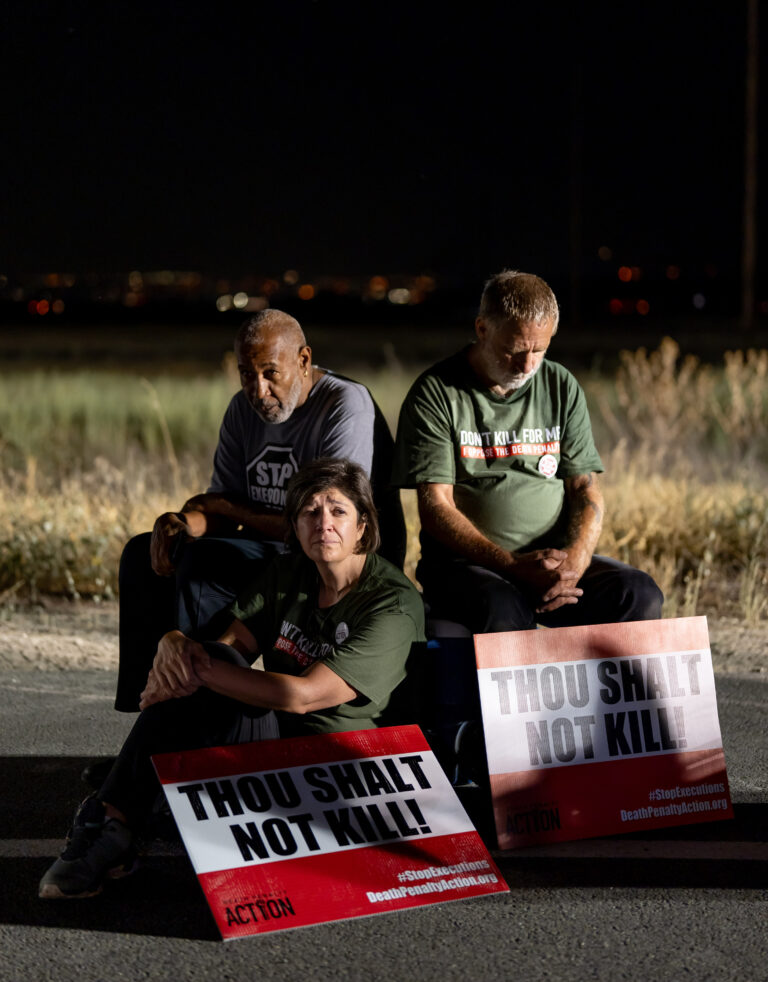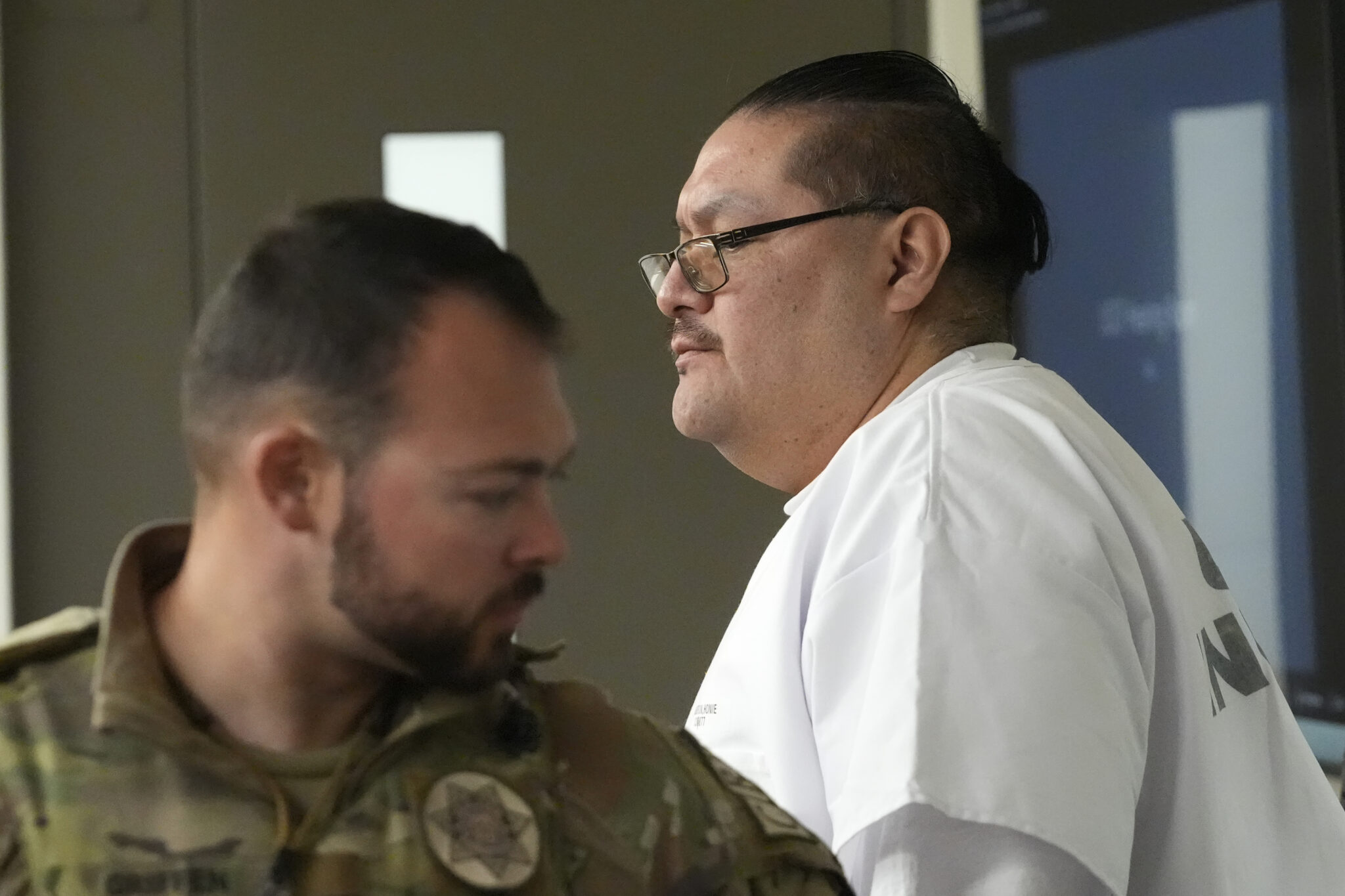
2024-08-09 09:50:01
As a lethal dose of pentobarbital moved through an IV line and into his veins, Taberon Honie turned to the room where his family sat. The glass was reflective, and he couldn’t see who was in the room. But he knew.
“I love you,” he said.
On the other side of the glass was his mother. Cancer took one of her children years ago, and during a Utah Board of Pardons and Parole hearing in July, she said another child was recently diagnosed.
As she sat in a small room with her family, watching her son’s final moments, she responded: “I love you, son.”
At 12:25 a.m. Thursday, Utah’s first death row inmate to be executed since 2010 was pronounced dead, 22 minutes after he gave his final statement and the lethal injection was administered.
After SC high court rules executions can go ahead, these 5 men could be scheduled to die
“From the start it’s been, ‘If it needs to be done for them to heal, let’s do this.’ If they tell you you can’t change, don’t listen to them. To all my brothers and sisters here, continue to change. I love you all, take care,” Honie said as the execution began.
Honie, 48, died from two doses of pentobarbital.
He was sentenced to death in 1999 for the violent murder of his ex-girlfriend’s mother, Claudia Benn. Prison officials moved forward with the execution after Honie exhausted years of unsuccessful appeals, including a recent commutation hearing and a petition to Utah Gov. Spencer Cox.
Utah News Dispatch was among the media witnesses for the execution. The witnesses agreed the death was quiet, with no outward signs of suffering.
The execution of Taberon Honie
At 11:35, the seven media witnesses were led through a security checkpoint; Kyle Dunphey with Utah News Dispatch; Sarah Murphy with ABC4; Pat Reavy with KSL.com; Hannah Schoenbaum with the Associated Press; Jessica Miller with The Salt Lake Tribune; Jim Spiewak with KUTV; and Ben Winslow with FOX 13. Glen Mills, communications director for the Utah Department of Corrections, also accompanied the media.
Witnesses were given a notepad and mechanical pencil. But everything else was left behind, including watches. As the execution unfolded, reporters noted how disorienting it was with no way to keep track of time.

After a short trip to the Antelope Unit, the prison’s maximum security unit, reporters filed into the witness room, a small area no more than 10 by 15 feet, possibly less. In the other four rooms sat members of Benn’s family, Honie’s family and state officials.
Despite the curtain being drawn, muffled voices could be heard through the door.
At one point, someone referred to something “flowing perfect,” presumably talking about the IV lines. After the execution, director of prison operations Randall Honey said the process of setting the IV lines was seamless, only requiring one poke in each of Honie’s arms. He reportedly told staff it was “painless.”
Right around midnight, the curtain opened.
Honie lay still, wearing an orange jumpsuit with his arms and legs strapped to the gurney and an IV line going into each arm. His hair appeared freshly cut, with a long, braided ponytail. He wore his black framed glasses, blinking rapidly as he stared at the ceiling.
A white sheet was pulled up slightly above his stomach and next to his head was an electrocardiogram reading his pulse. He would move occasionally during the process. But for the most part, he appeared calm.
The prison’s warden, Bart Mortensen, read the death warrant at about 12:02 a.m. Then came Honie’s last words.
Honie spoke quickly yet was composed. His demeanor remained calm. Honey, the prison director, would later tell reporters: “He appeared to have accepted it.”
At 12:04 p.m., the lethal injection began. Pentobarbital acts as a barbiturate, depressing brain activity and ultimately the nervous and respiratory system.
As the injection began, Honie turned to the two officials in the room, telling them, “Thank you for taking care of my family.”
Honie’s left leg twitched nervously. His eyes remained open, momentarily looking around the sterile, white concrete room, illuminated by harsh fluorescent lights.
Suddenly, he sat up as much as the gurney would allow and took a deep breath, his mouth wide open. His head rested back on the gurney and his eyes closed. His breathing grew rapid. Then it slowed. Within a minute or two, his chest stopped moving and his skin turned a palish blue. He would never move again.
At 12:14 a.m., a second dose of pentobarbital was injected through the IV line. The doctor present advised that it be used, since it had already been prepared.
Honie laid there, motionless, his eyes shut and his mouth slightly agape, just enough to see his teeth. It almost looked like he was grinning. His right arm remained in a relaxed fist.
At 12:21 a.m., the EKG near his head indicated his heart had stopped and Honey and Mortensen placed the white sheet over his head. Then the curtain closed. The last thing reporters saw was his right arm poking out from under the sheet, still in a relaxed fist.
After he was pronounced dead, Honie’s father and cousin were let into the room. As members of the Hopi tribe, they believe the soul can be trapped in the body. They performed a quick ceremony with some bird feathers and cornmeal, laying a path for the soul to leave the room. Honey described it as “very quick and simple.”
A cleaning crew then came in and through the curtains in the media witness room, a mop could be heard. Seconds later, the smell of bleach seeped into the room. At about 1:30 a.m. when the witnesses were allowed into the execution chamber, the aroma was overpowering.

For some, what happened during the early morning hours at the prison resembled a medical procedure. It almost looked peaceful. If someone with no knowledge of the execution somehow walked in during Honie’s final moments, it could have looked like a man falling asleep.
The reality is far different. Honie spent the day talking with his family. He ate a cheeseburger and drank a milkshake. He met with counselors and attorneys. He spoke with a spiritual leader from the Hopi Tribe. Then, the state of Utah executed him. A far cry from an act carried out under the admonition to “do no harm,” the analogy of a medical procedure is not accurate.
What he felt in his final moments will remain a mystery.
If done, an autopsy could show signs of a pulmonary edema, a potential side effect of a lethal dose of pentobarbital where the lungs fill with blood and the person feels like they’re drowning.
But an autopsy can’t show pain and it can’t show fear.
In a statement after the execution, Honie’s attorneys Therese Day and Eric Zuckerman described him as “a proud member of the Hopi-Tewa Tribe from First Mesa, Arizona.”
“Mr. Honie always accepted responsibility for his crimes and expressed deep remorse for his actions, which were committed while he was extremely intoxicated from drugs and alcohol. Over the past 25 years, Mr. Honie worked on himself to become a better person,” they said. “Today, he was not the same man he was 26 years ago when he committed these crimes. We are saddened that despite this change, the State of Utah did not grant him mercy. Mr. Honie’s life had value — he was worthy of redemption, and not being judged solely by his worst actions.”
Taberon Honie’s final hours
Shortly after 6 a.m., Honie was led into an observation room in the Utah State Correctional Facility in Salt Lake City, where prison officials say he slept for about two hours. By 7 a.m., both that prison and the Central Utah Correctional Facility in Gunnison were placed on lockdown.
Honie was given a tablet to watch movies and entertainment, but as of 6 p.m., corrections staff said he hadn’t used it — instead, he spent his time meeting with family.
That included his daughter, mother, father, three of his sisters, two cousins, a brother-in-law and his aunt. For security reasons, he was only able to see two people at a time. No physical contact was permitted as he spoke to them through a glass pane. He did not have a window with an outside view.
“His mood has been described by our team who have interacted with him as gracious and appreciative throughout the day,” said Glen Mills, communications director for the Utah Department of Corrections.

Honie also had three mental health checks through the day, but Mills said he did not accept any medication.
Technically, Honie’s last meal was a cheeseburger, french fries and milkshake. But Mills said Honie wanted his last meal to be remembered as one he had with his family previously on the prison campus.
By about 8:30 p.m., a deputy warden walked into the observation room, telling Honie and his family to prepare for their final goodbyes. Honie had declined to see his attorneys during the visitation time, opting instead to spend it with his family.
Shortly after the deputy warden walked in, Honie said goodbye to his family, Mills said, leaving them with one last message: “Keep your heads up.”
“There were lots of emotions and tears,” Mills said.
Honie then used his tablet for the first time Wednesday, listening to music before he met with his attorneys. Mills described his mood at that point as “jovial.”
Honie talked with his attorneys until the 10 p.m. deadline, Mills said. Once they were gone, prison officials offered Honie a Valium, which treats anxiety. He declined.
Honie’s final two hours were expected to be spent alone, listening to music on his bed. Mills wasn’t sure what kind of music.
At about 11:30 p.m., he was to be led into the execution chamber, where he would be strapped to a gurney.
There, a team of six people would begin to administer pentobarbital, a drug often used to quell seizures, but which is now commonly used in lethal injections. Two of the team were Department of Corrections officials, the prison’s warden and the chief of prison operations.
The department declined to disclose any identifying information about the other four individuals — for instance, their medical qualifications or place of employment — but said they made up a two-person IV team and a two-person execution team. All of them have some kind of medical experience, the department said.
Meanwhile, outside and nearly 2 miles away in a designated “free speech zone,” a crowd of about two dozen protesters had been building through the night, denouncing Honie’s execution and Utah’s death penalty laws. The prayed, sang and spoke together as they awaited word of his death.

Who is Taberon Honie?
Honie was 22 years old when he broke into Benn’s home. Benn, a member of the Paiute Tribe, was a substance abuse counselor in the Cedar City area who relatives described as a pillar in the community.
Leading up to that moment, Honie had struggled with addiction for much of his life. He likely experienced fetal alcohol syndrome, and at just 12 years old started drinking and using drugs regularly.
During his commutation hearing in July, witnesses said he suffered several traumatic brain injuries which impacted his decision making. Honie is also a member of the Hopi Tribe, and experts called to testify during his hearing said he’s a victim of intergenerational trauma.
Honie said he had been drinking since 8 a.m. on the day he murdered Benn in July 1998. He claims he doesn’t remember most of that night.
But court records and witness testimony paint a gruesome picture of the crime.
According to court documents, Honie took a taxi to Benn’s home at about 11:20 p.m. He proceeded to argue with her through a glass door, before using a rock to break into the home.
With her three young grandchildren inside — including Honie’s own daughter — he beat Benn before cutting her throat. Court records show he mutilated her body, stabbing her multiple times in the genitals. Prosecutors say he had intended to rape her, but stopped only when he realized she was dead.
Two of the three children inside had blood on them when police arrived. Court testimony would later reveal Honie admitted to molesting one of them.
In 1999, Honie was sentenced to death.
During his commutation hearing in July, Honie told the Utah Board of Pardons and Parole he was a changed man, comparing himself to fertilizer “helping things grow” in the prison.
Over 26 years of incarceration, Honie earned his diploma and the trust of prison staff, while supporting his daughter as she struggled with addiction, he said.
“I’ve shown you that I can exist in prison. I’m not a threat to the public, I’m not a threat to anyone,” Honie told the board.
But Benn’s family, who spoke during the hearing, pushed back on Honie’s testimony, calling for an “eye for an eye.”
“Where could we have been if she had survived? We could have accelerated as a tribe, individuals and family, but it was torn apart that dreadful day,” said Benn’s cousin, Betsy China. “The best thing for me, my choice, would be the death penalty. Let’s get this over.”
Honie will be Utah’s first inmate killed by lethal injection since Joseph Mitchell Parsons was executed in 1999. In 2010, Ronnie Lee Gardner was executed by firing squad.

Like SC Daily Gazette, the Utah News Dispatch is part of States Newsroom, a nonprofit news network supported by grants and a coalition of donors as a 501c(3) public charity. Utah News Dispatch maintains editorial independence. Contact Editor McKenzie Romero for questions: [email protected]. Follow Utah News Dispatch on Facebook and X.





